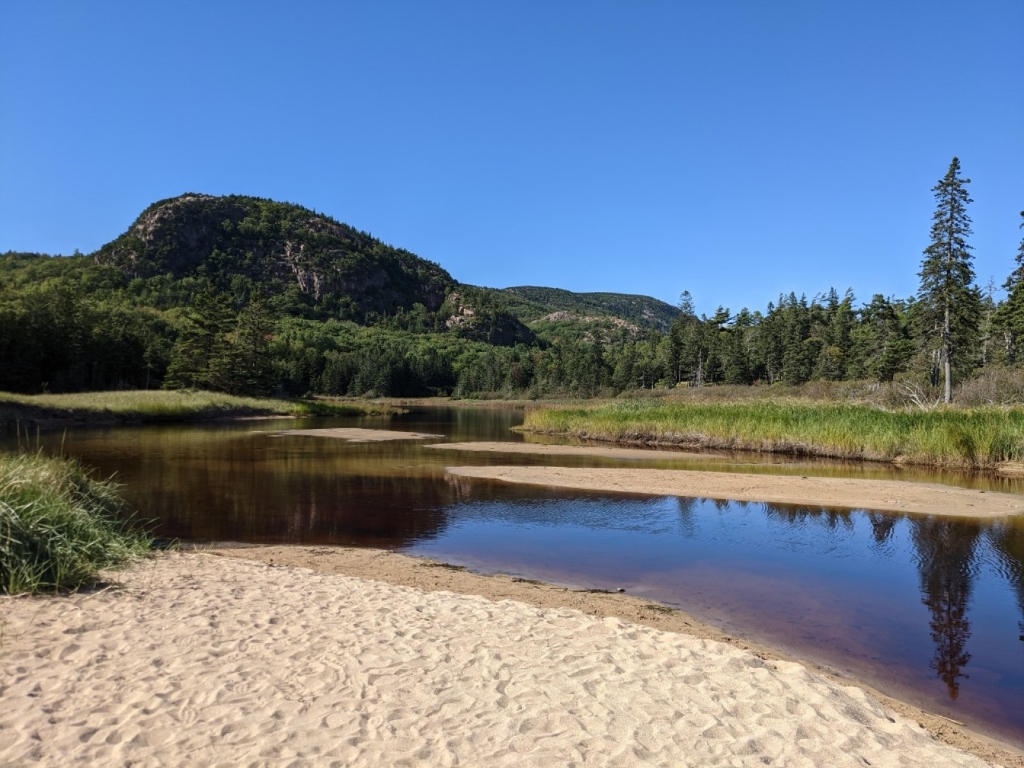
The Beehive and many of Acadia’s other mountains are examples of a geologic feature called a “roche mountonée.” Roches mountonée always have this distinct shape: a gradual slope leading up to a steep drop-off. This shape was created by glaciers, which covered Acadia from 35,000 to 16,000 years ago.
As they made their way over mountains like the Beehive, glaciers had to fight against gravity as the mountain pushed them up toward the sky. This created a lot of pressure on the surface of the mountain. Not only were the glaciers working against the force of gravity, but the glaciers here were over a mile thick! That ice adds up to a lot of weight. The pressure from the combined weight of the ice and the gravity pulling it downwards meant that the glacier smoothed the surface of the mountains it traveled over, much like sandpaper. When we look at the Beehive and see the gentle slope leading up to its summit, we are looking at the path that the glaciers created as they passed over the mountain.
But if glaciers have smoothed one side to a gentle slope, why does the other side look so steep? After the glacier reached the summit, there was a large release in the pressure that we previously talked about. Now, gravity was helping to pull that heavy ice back down the mountain. As the ice moved back down the mountain, changes in pressure meant that some of the ice at the base of the glacier melted – and that water seeped into cracks of the mountain’s surface. Eventually, that water would refreeze, breaking chunks of rock loose from the mountain as it expanded into ice. The glacier continued “plucking” rocks from the surface, making a steeper slope each time. This process happened over and over again as the glacier continued sliding over the mountain; eventually, it created the famously steep path up the Beehive that Acadia visitors know today.
Is there something we missed for this itinerary?
Itineraries across USA


















































